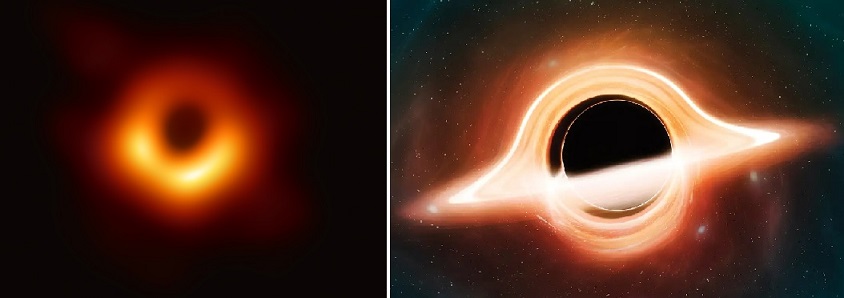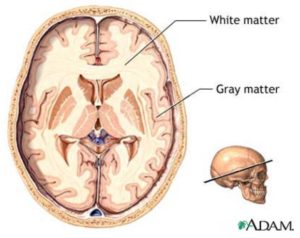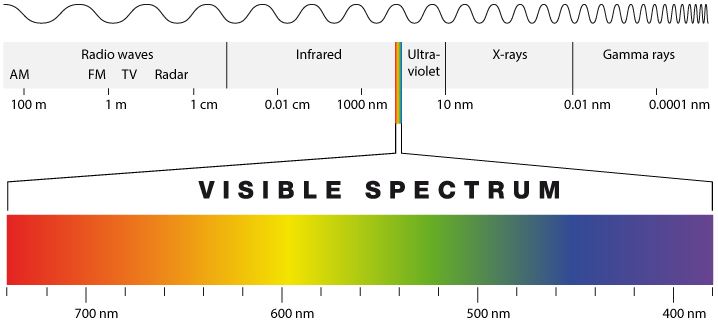This week’s parasha, Tetzave, continues in describing the design of the objects used in the Mishkan, the Holy Tabernacle. The focus turns to the vestments of the kohen gadol. We see again that the most notable fibres used in sewing these clothes were tekhelet, argaman, and tola’at shani—blue, purple, and red wool. Our Sages taught (Menachot 43b) that tekhelet is sea-blue, and the sea reflects the sky, which is symbolic of God’s Throne, as per Exodus 24:10, where the nation saw that “there was under His feet the likeness of sapphire stone, and the likeness of clear skies…” (Similarly, Isaiah 66:1 has God declaring that “the skies are My throne, and the Earth is My footstool…”)
Among other things, blue is associated with water, which is in turn associated with life. In Kabbalah, blue is one of the colours of Chessed, lovingkindness. Red is its polar opposite, the colour of blood and fire, representing Gevurah, judgement and severity. Combining red and blue gives purple, the balance between them, Tiferet, seat of truth and beauty. On a mystical level, the purple argaman (ארגמן) also represents the chief angels Uriel (אוריאל), Raphael (רפאל), Gabriel (גבריאל), Michael (מיכאל), and Nuriel (נוריאל).
At first glance, the colours of the three key Sefirot of Chessed, Gevurah, and Tiferet appear to be blue, red, and purple, respectively. However, this is not always the case. In varying sources, the colours of the Sefirot are presented differently. While it is undoubtedly true that in Judaism multiple opinions can be correct simultaneously, can we nonetheless put together a definitive colour spectrum for the Sefirot? Today, we have a great deal of scientific knowledge of light and colour that can greatly assist us in this endeavour. So, which colours correspond to the Sefirot?
Colour Spectrum
There are seven discernible colours of a rainbow, in this order: red, orange, yellow, green, blue, indigo, violet. All the other colours fit somewhere in between these. In more scientific terms, human sight is capable of perceiving wavelengths roughly in the range of 380 to 740 nanometres. This is a tiny sliver of the entire electromagnetic spectrum. The wavelengths longer than 740 nanometres, meaning beyond what we perceive as red, are fittingly called infrared, while the wavelengths smaller than about 380 nanometres, meaning beyond violet, are called ultraviolet. We cannot see these forms of radiation, nor can we see what lies past them, such as microwaves and radio waves past infrared, or x-rays and gamma rays past ultraviolet. Thus, all the colours we see have wavelengths between 380 and 740 nanometres.
All of these wavelengths combine to form white light. We can split white light into the entire rainbow by using a prism of some sort, whether a triangular piece of glass or a rain droplet. An object that is white is reflecting all the wavelengths of light that hit it. An object that is black, on the other hand, is actually absorbing all the wavelengths, and so it appears black to us. In between white and black are the shades of grey. That gives us a total of—not surprising for any mystic—ten major colours. Once again, we see how they divide up neatly into groups of 3 and 7, as do the Sefirot which divide into the upper three mochin, and the lower seven middot. (For more on that, see here.)
Based on the above, we can say that white, grey, and black correspond to the mochin, while the seven colours of the rainbow correspond to the middot. This is a nice simple model, and in some cases works well. However, it does not generally fit with what we know of the Sefirot. To get a better grasp of the Sefirot colours, we need to turn to a fundamental mystical text.
Pomegranate Orchard
One of the greatest Jewish mystics in history was Rabbi Moshe Cordovero (“Ramak”, 1522-1570), who was the leading Kabbalist in Tzfat before the arrival of the Arizal. In his monumental Pardes Rimonim, “Pomegranate Orchard”, one of the first proper textbooks of Kabbalah, the Ramak devoted several pages to the colours of the Sefirot (Gate 10, Sha’ar HaGavanim). The Ramak begins with a warning that one should not think the Sefirot have any colour, of course. These are cosmic spiritual entities that bear no colour whatsoever. We are simply trying to understand how physical objects that do have colour might relate to the esoteric Sefirot. It can help us understand the spiritual roots of colours, and the nature of the objects that possess those colours.
The Ramak tells us that the first Sefirah, Keter, is white. This is most appropriate: white contains all the colours within it, and Keter is the source that shines forth light to all the Sefirot below. Another possibility that the Ramak notes is that Keter is crystal clear, like “awesome ice”. A third opinion is that Keter is black, like absolute “darkness”. In other words, Keter represents such a concealed light that it appears entirely dark! Or, the light is so luminous that it is blinding. The Ramak goes on to clarify that Keter really has three aspects within it. (Later mystical literature will identify the higher two parts of Keter as Ta’anug, “pleasure”, and Emunah, “faith”.) First comes darkness, then clarity, and then whiteness. This is reminiscent of a black hole—an image of which was captured for the first time in 2019 by the Event Horizon Telescope. A black hole has gravity so crushingly strong that it sucks even light into it, and as the light bends inward it forms a blindingly bright ring. It is further interesting to note that the word keter itself literally means a “ring” or “circle”, and from that original definition came the more common term for a “crown”. Keter is a “luminous ring” shining forth light, resembling the shape of a crown and its spokes.

On the left, the first-ever image captured of a distant black hole. On the right, an artist’s rendition of a black hole.
For Chokhmah, the Ramak presents an entire rainbow of possible colours. In fact, he suggests Chokhmah might represent seven colours, though it seems to be most associated with tekhelet. The Ramak admits that all the Sefirot have an aspect of tekhelet. As we saw above, the colour of tekhelet is strongly tied to sapphire, and the word Sefirah (ספירה) itself is very much connected to sapphire (ספיר). The exact identity of Chokhmah is left unclear. The case is somewhat similar with Binah, which has multiple possibilities though the Ramak argues the colour most associated with it is green.
Regarding Chessed, the Ramak first describes it as being white. Chessed is the first of the middot, acting like a mini-Keter that radiates great light within the lower plane, hence the whiteness. Having said that, the Ramak notes that Chessed is also blue, as we might expect. He then presents silver as an ideal Chessed colour, too. On the other side, there is no doubt at all that Gevurah is red, and everyone agrees on this point. (There are some other aspects to Gevurah, though, including “darkness” due to its severity.) The Ramak then says that Tiferet must be, as expected, a blend of Chessed and Gevurah, so a mix of white and red, or blue and red. This might suggest pink or purple, and the Ramak notes the connection to argaman. He also suggests the possibility that it is yellow, like the yolk of an egg. Alternatively, he cites Rabbi Shimon bar Yochai as teaching that Tiferet is green (as the Zohar says, for instance at III, 257a, Ra’aya Mehemna). When we look at the colour spectrum, green actually makes sense. The reds are on the left end (left being Gevurah), and the blues are on the right end (right being Chessed). In the middle lies green, just as Tiferet lies in the middle between Chessed and Gevurah.
For most of the rest of the Sefirot, the Ramak describes various combinations of white and red. No exact colour is given, so it needs deciphering. Netzach is described as a “lighter” form of red, that is also drawing down from Chessed above. It might help to posit that the left column of the Sefirot parallels the left side of the colour spectrum, while the right column of the Sefirot parallels the right side of the colour spectrum, and the middle column to the middle of the spectrum. In that case, Netzach would be a purple or violet, which fits with the description of a red-blue-white mix. Netzach literally means “victory” and has key qualities of leadership. In Kabbalah, the figure typically associated with Netzach is Moses, the quintessential leader. What that in mind, it is interesting to note that purple was historically associated with royalty, government, and military distinction. (In the US, the oldest and most common military decoration happens to be the Purple Heart.)
Then comes Hod, again described as a mix of white and red, though this time even lighter. Red Gevurah sits on top of it, and Hod “livens” it up. This implies an orange or yellow. Hod literally means “splendour”, including within it a connotation of vibrancy and vividness. Orange and yellow are indeed the most vivid colours, and scientifically stand out more than the others. This is why they are used almost exclusively in safety vests, warning signs, caution tape, life boats, and life jackets. Orange and yellow are easy to recognize, and Hod itself is associated with “recognition” and is commonly translated as “acknowledgement”. Hod is the root of hodayah (“gratitude”) and the verb lehodot, (“to thank”) because thanking someone is really just recognizing and acknowledging that they did something valuable for you.
Yesod is a blend of Netzach and Hod, though it is also a deeper version of the green Tiferet. The Ramak says it is like green mixed with some of the redness on the left. In that sense, it has a deeper orange of Hod, too, all of which implies that Yesod is brown. Fittingly, the Ramak compares Yesod to the image of a tree—the main part of which is a brown trunk.
Finally, there is Malkhut, alluded to by the words “I am black…” in the Song of Songs (1:5-6). Malkhut is always described as an “empty vessel”, one that has no light of its own and simply absorbs everything that flows from above. It therefore must be black first and foremost, though there are other possibilities. We began by noting that the deepest aspect of Keter is “black”, and with the blackness of Malkhut we have come full circle.
Brain Colours
To summarize what we have so far, and removing any redundancies so that each Sefirah has its own distinct colour: white and black are respectively for Keter and Malkhut, blue and red for Chessed and Gevurah, green and brown for Tiferet and Yesod, purple and orange/yellow for Netzach and Hod. What is yet unclear is the identity of Chokhmah and Binah. What may help solve the mystery is focusing on the concept of mochin.
 The trio of Keter, Chokhmah, and Binah are called mochin, which literally means the “brain”. The human brain is associated with three colours: white, grey, and pink. The brain is divided up between “white matter” and “grey matter”. The grey refers to the actual neuron cell bodies, while the white part is where all the connections between the neurons are, as well as the brain’s support cells. The white comes from the colour of myelin, the special insulating substance of the nervous system, composed of roughly half fat and half protein. Without myelin, the nervous system cannot function properly. (Multiple sclerosis, for instance, is a “demyelinating disease”.) White matter is like the white Keter, the source without which nothing functions. Meanwhile, grey matter is where the Chokhmah lies. Together, the mix of white and grey matter, plus the capillaries full of blood, makes the brain appear pink. (While the Ramak himself holds that Binah should be green, he does note the possibility that it is another white-red mix, so pink certainly fits.) In this way, the brainy trio of white, grey, and pink are perfect for Keter, Chokhmah, and Binah, the “brain” Sefirot!
The trio of Keter, Chokhmah, and Binah are called mochin, which literally means the “brain”. The human brain is associated with three colours: white, grey, and pink. The brain is divided up between “white matter” and “grey matter”. The grey refers to the actual neuron cell bodies, while the white part is where all the connections between the neurons are, as well as the brain’s support cells. The white comes from the colour of myelin, the special insulating substance of the nervous system, composed of roughly half fat and half protein. Without myelin, the nervous system cannot function properly. (Multiple sclerosis, for instance, is a “demyelinating disease”.) White matter is like the white Keter, the source without which nothing functions. Meanwhile, grey matter is where the Chokhmah lies. Together, the mix of white and grey matter, plus the capillaries full of blood, makes the brain appear pink. (While the Ramak himself holds that Binah should be green, he does note the possibility that it is another white-red mix, so pink certainly fits.) In this way, the brainy trio of white, grey, and pink are perfect for Keter, Chokhmah, and Binah, the “brain” Sefirot!
Putting it all together, we can propose the following colour array for the Sefirot:
While it may not be definitive, it does attempt to incorporate the best of what we know from both Kabbalah and science. Now, how can we apply some of this knowledge to better understand the universe around us?
Applying Mystical Colour Theory
In Kabbalah, the three main axes of the Sefirot are Chessed, Gevurah, and Tiferet (abbreviated as Chagat, חג״ת). These three are often used to represent the entire array of Sefirot, with Chessed standing for the whole right pillar, Gevurah for the entire left pillar, and Tiferet for the middle. As we saw above, their corresponding colours are blue, red, and green. Scientifically, these are referred to as the primary colours (at least when it comes to light—painters might say that the primary colours are red, blue, and yellow!)
When it comes to our electronics, we find that they also use combinations of blue, red, and green. A typical computer screen will generate only blue, red, and green pixels, and the combinations of these produce all the images we see. A typical colour printer, too, uses only blue, red, and green inks to generate the entire array of colours. Amazingly, our own eyes work this way, with blue, red, and green cone cells on our retinas that tell our brains what we are seeing. (For more on this, see ‘The Zohar’s Amazing Scientific Knowledge of the Eyes’.)
Today, electronics might actually use secondary colours instead: yellow, magenta, and cyan. These are produced by mixing the primary colours: red and green make yellow, red and blue make magenta, and blue and green make cyan. Note how these three parallel the Sefirot beneath Chagat, ie. Netzach, Hod, and Yesod (abbreviated Nehey, נה״י). Purple-like magenta is for Netzach, and yellow is for Hod, though Yesod is admittedly not quite cyan, but should be a darker and deeper tone.
In astrophysics, one of the most important concepts is that of redshift and blueshift. Distant planets that are moving away from us appear redder as their wavelengths stretch out before reaching us. Meanwhile, distant planets that are moving towards us appear blue as their wavelengths compress before reaching us. In Jewish thought, pushing away is always associated with the left of Gevurah (red), while drawing near is always associated with the right of Chessed (blue). Our Sages famously stated to always “push away with the left [hand] and draw near with the right [hand]” (Sanhedrin 107a) to teach that one shouldn’t be too strict or too soft, but have a balanced approach between rebuke and love. We see this analogously in the colours of outer space: planets that are distancing are redder, and planets that are drawing near are bluer!
There are many more wonderful applications of mystical colour theory for describing the mechanics of the universe around us. What others can you find?



Pingback: Counter-Sefirot and the Seven Chambers of Hell | Mayim Achronim
Pingback: Mayim Achronim